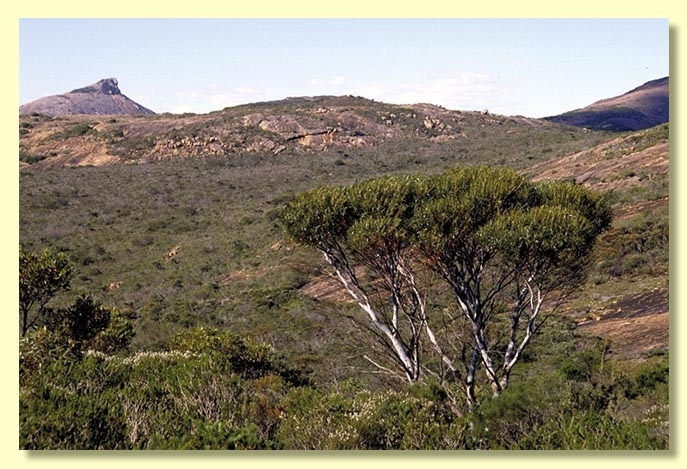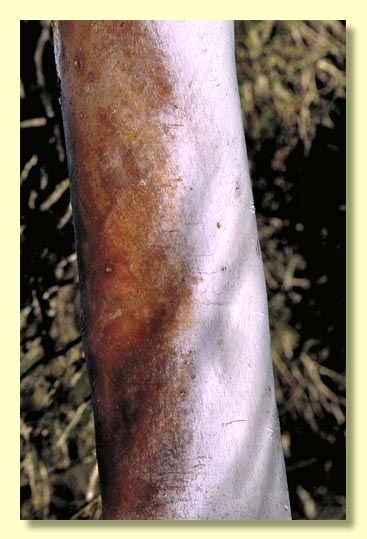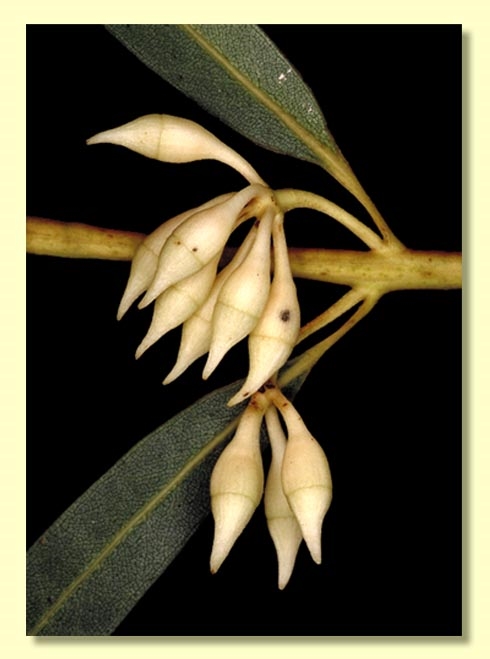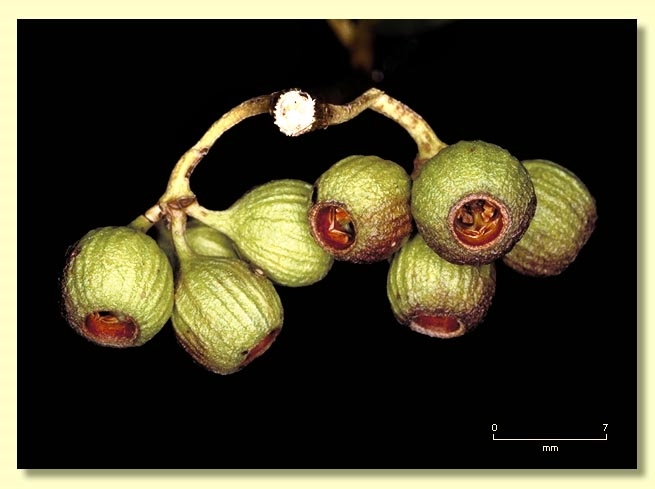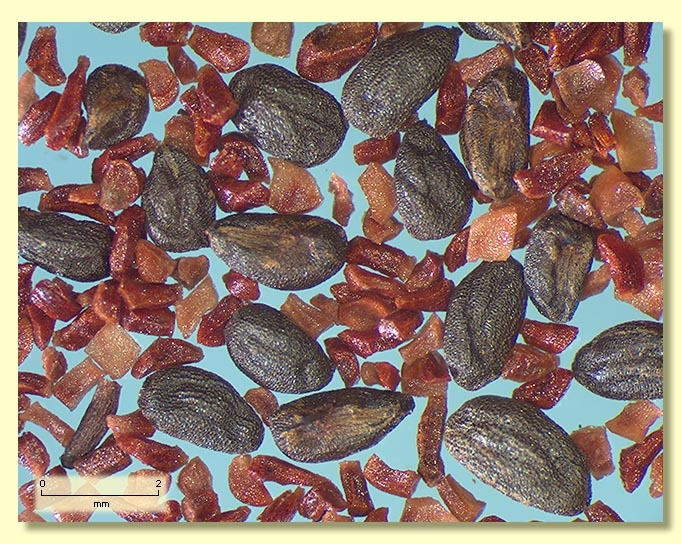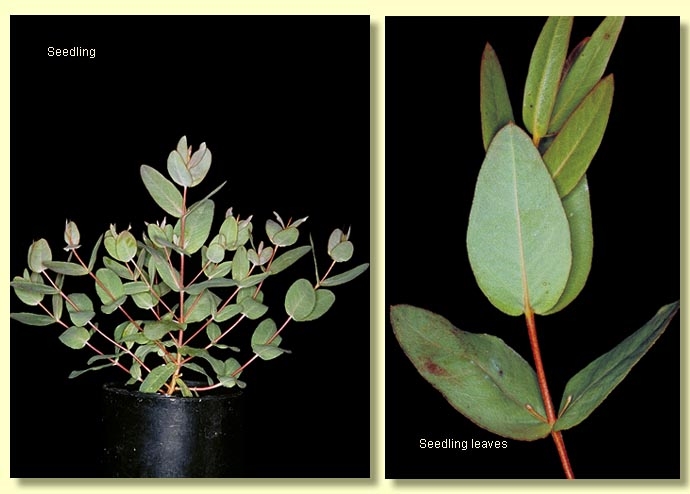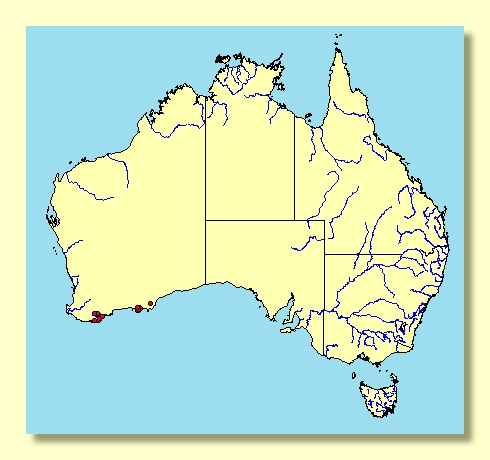Euclid - Online edition
Eucalyptus doratoxylon
Eucalyptus | Symphyomyrtus | Bisectae | Destitutae | Decurvae
Bark smooth throughout, powdery white over reddish or greenish brown, rarely with a short stocking of flaky rough grey-black bark.
Branchlets lacking oil glands in the pith.
Juvenile growth (coppice or field seedlings to 50 cm): stems square; juvenile leaves always opposite, narrowly elliptic-lanceolate, 4–8 cm long, 0.5–1.5 cm wide, green.
Adult leaves opposite, sometimes a few pairs also sub-opposite, petioles 0.2–1.2 cm long; blade narrowly elliptic to narrowly lanceolate or sometimes falcate, 4.2–9.5 cm long, 0.5–1.6 cm wide, base tapering to petiole, margin entire, apex finely pointed, glossy, green, side-veins greater than 45° to midrib, reticulation dense to very dense, intramarginal vein remote from margin, oil glands apparently absent.
Inflorescence axillary unbranched, pendulous, peduncles 0.8–2 cm long, buds 7 per umbel, pedicellate (pedicels 0.3–1 cm long). Mature buds narrowly pyriform to obovoid (0.8–1.1 cm long, 0.3–0.4 cm wide), creamy-white (not glaucous), scar present, operculum beaked, stamens inflexed, anthers oblong, versatile, dorsifixed, dehiscing by longitudinal slits, style long and straight (but not extending into hollow beak of operculum), stigma blunt to rounded, locules 3(4), the placentae each with 4 vertical rows of ovules. Flowers white to pale yellow.
Fruit pendulous, pedicellate (pedicels 0.3–0.9 cm long), more or less spherical, rarely barrel-shaped, 0.5–0.9 cm long, 0.5–0.8 cm wide, disc descending, valves 3(4), near rim level.
Seeds blackish brown or grey-brown, 1.5–3 mm long, flattened-ovoid, dorsal surface smooth but furrowed longitudinally, hilum ventral.
Cultivated seedlings (measured at ca node 10): cotyledons coarsely lobed to unevenly Y-shaped (bisected) and more or less glaucous; stems square in cross-section, minutely warty; leaves sessile, always opposite, oblong to elliptic or ovate, 2.5–4 cm long, 1.4–2.2 cm wide, base rounded or stem-clasping, green, dull.
Flowering has been recorded in January, February, June, August, September, October and December.
A mallee endemic to Western Australia found in coastal and subcoastal areas from Mount Lindesay to Albany and the Stirling Range and, disjunctly, east from Esperance to Cape Arid National Park, on sandy sites along drainage lines. The bark is usually smooth, often white and powdery and the adult leaves are opposite, glossy, green with very dense reticulation and are apparently glandless.
Eucalyptus doratoxylon belongs in Eucalyptus subgenus Symphyomyrtus section Bisectae subsection Destitutae because the buds have two opercula, cotyledons are coarsely lobed to unevenly Y-shaped (bisected) and the branchlets have no oil glands in the pith. Within this subsection E. doratoxylon has only one close relative, E. decurva, which shares the unusual cotyledon features, habit and down-turned peduncles, but differs in having alternate leaves, glaucous branchlets and more rounded operculum. E. doratoxylon and E. decurva together they form series Decurvae.

